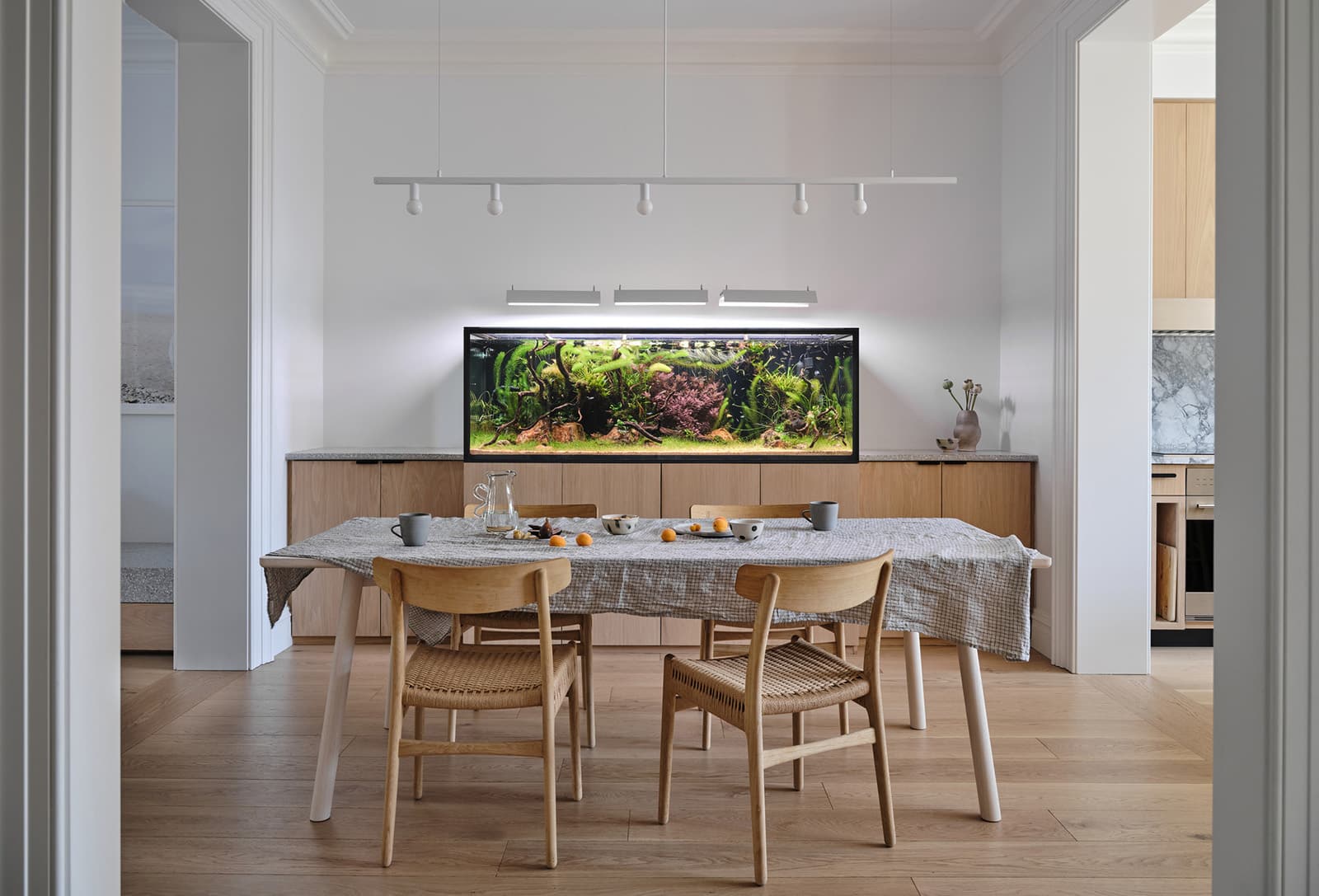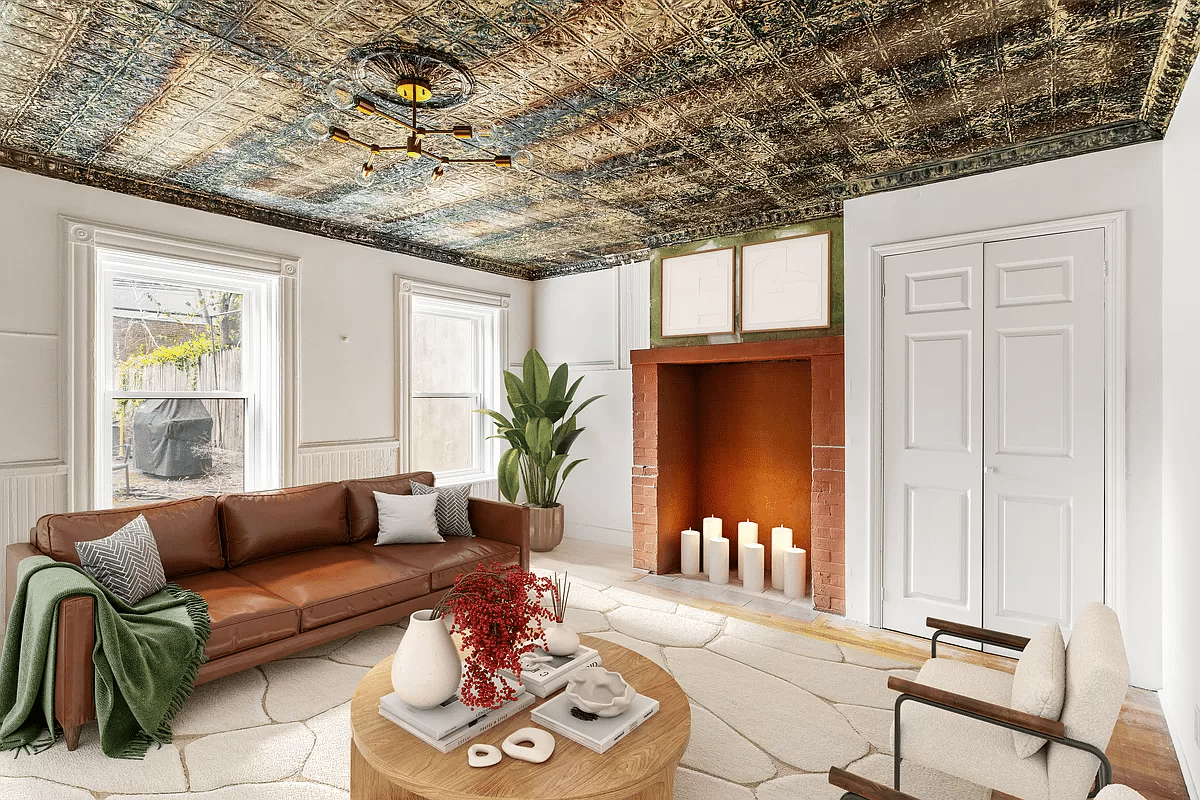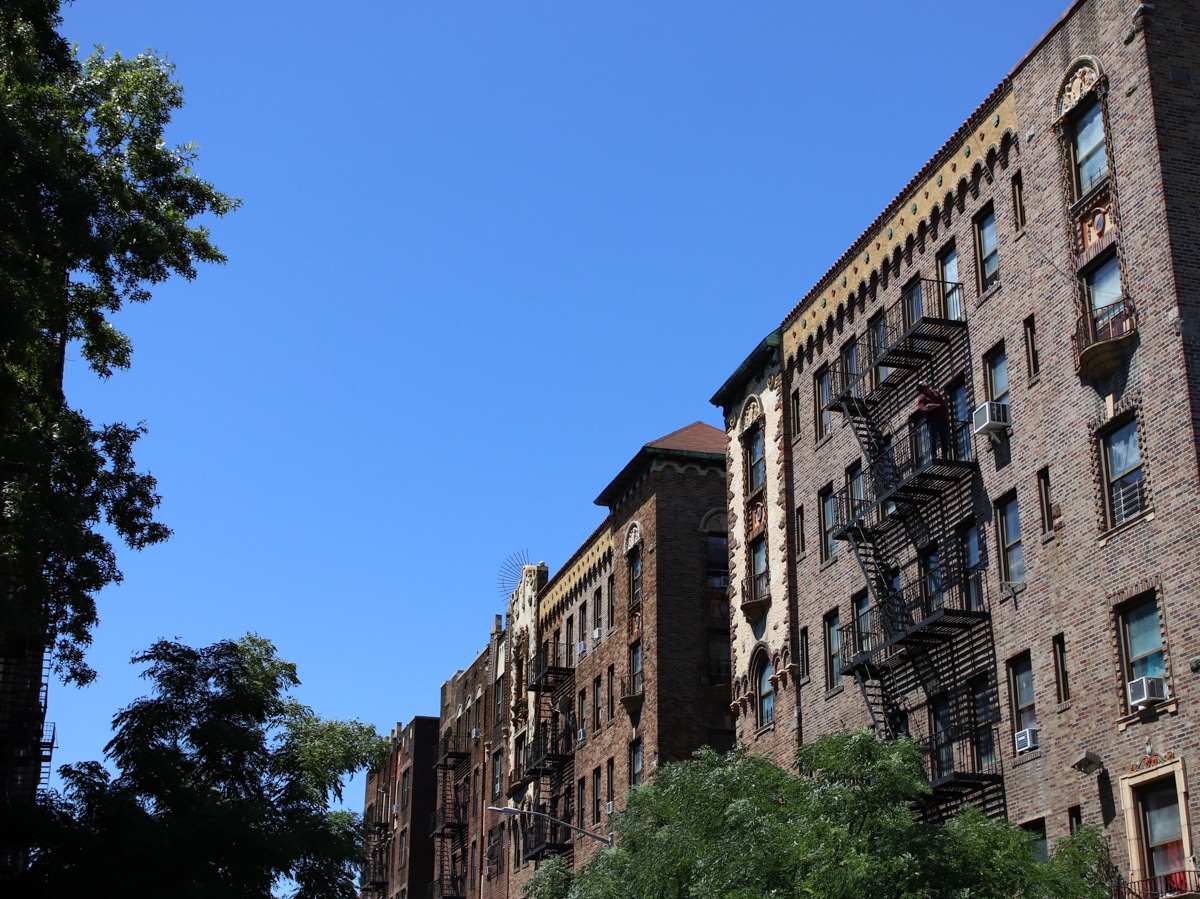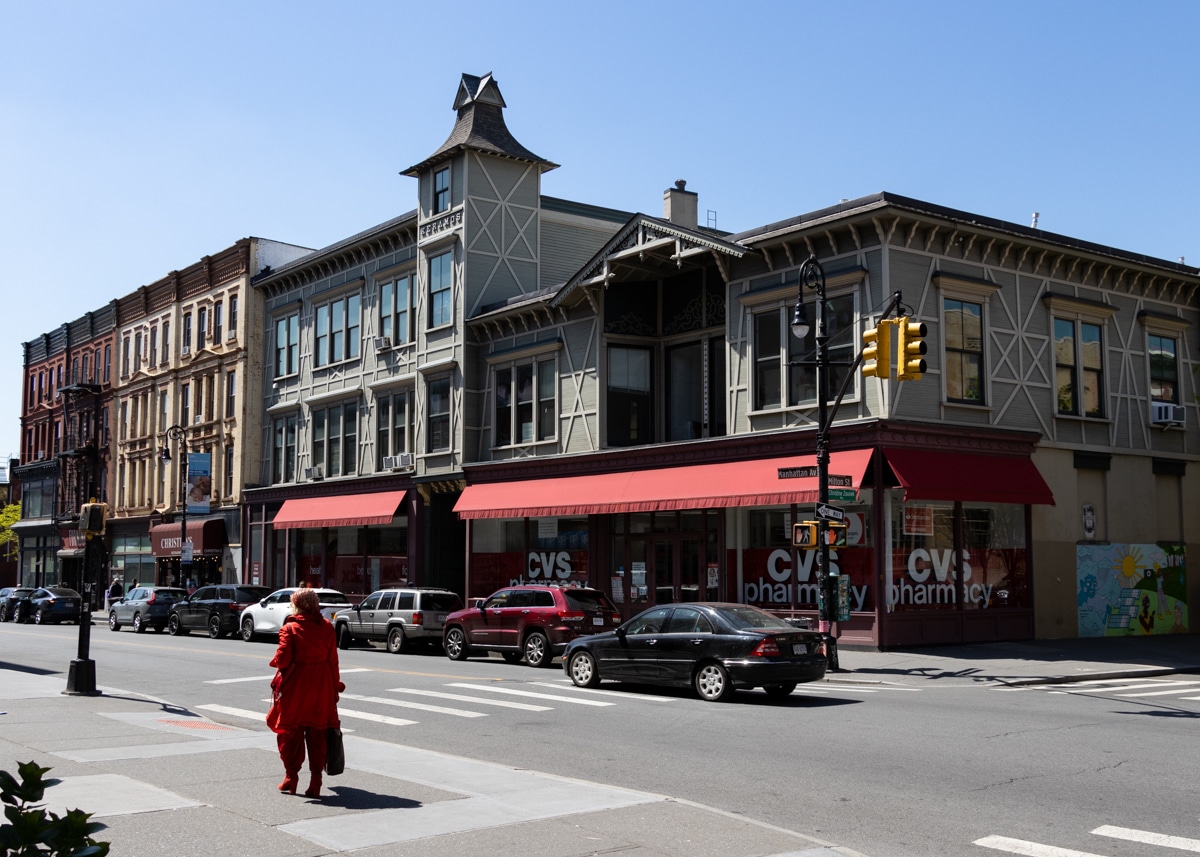515 Fifth Avenue: The Slope Goes Green
Frustrated by the level of new design in the brownstone neighborhoods they called home, architects Joanna Frank and Aida Stoddard started Bright City Development in 2005 to modern, contextual, eco-friendly design to the area. The pair’s first project is 515 Fifth Avenue, a six-story building with 15 residential units and ground-floor retail. Six units are…

Frustrated by the level of new design in the brownstone neighborhoods they called home, architects Joanna Frank and Aida Stoddard started Bright City Development in 2005 to modern, contextual, eco-friendly design to the area. The pair’s first project is 515 Fifth Avenue, a six-story building with 15 residential units and ground-floor retail. Six units are available on the A&H site currently at between $650 and $700 per square foot. One very cool feature is the green roof, shown here in its current state of partial completion along with a sample of what will cover it. Before the cynics jump in, the theory behind a green roof is that it helps avoid drainage problems in city sewers during heavy rains (which can lead to sewage overflows) and it also reduces some of the “heat island” effects in summertime. Other “green” aspects of the building include bamboo flooring and cabinets, fireslate countertops made of recycled materials and solar-powered exterior lighting; all appliances have the highest energy-efficiency ratings as well. Sounds pretty cool to us.
5 One 5 Condominiums [Aguayo & Huebener] GMAP
Old South Slope Salvation Army Store Gets Juicy and Green [Curbed]









i absolutely can not believe that you are criticizing someone for wanting to build a greener building.
so crazy.
thanks for adding this to our neighborhood. i, for one am gratfeul for ANY improvements made in being green and absolutely disagree with the poster on here who thinks its all or nothing.
Park slope should welcome this with open arms.
I think the greenest thing you might do is fit in with the neighborhood. Designing the entire corner with floor to ceiling glass on this section of 5th Avenue does not. You might as well put it next to the Commerce Bank.
People wonder why Smith Street and 5th Avenue have been such commercial successes. Its exactly because they have wonderful small scale brick facades that fit the context of the street. While floor to ceiling glass may indeed help you extract more rent from your ground floor tenant, it takes away from the street and the neighborhood.
Is there anything greener than a nice red clay brick?
OKAY. Let me try to address your questions again. We are using flourescent lighting. We have taken care to be very specific with our marketing to outline exactly what features are provided. The roof has been tested and we have detailed figures on it’s capabilities; however, DEP doesn’t yet recognize a green roof as an approved means of providing water retention. Maybe you should lobby DEP to update it’s standards.
Okay then it seems as if you had to give up on making your building truly green and just did what you could and made it greener. That’s fine. But then why are you marketing your building as green? It is misleading. And you didn’t answer the question about the use of flurescent lighting in the units as opposed to incandescent lighting. What’s up with that? And also did you use recessed lights too, which is standard in new condos these days? You must know these suck energy like nobody’s business. I just think the consumer deserves to get the full picture on what is green and what isn’t. And you are muddying it by not describing in specific terms of energy useage or energy loss what they are getting with this so-called “green” building. Also the roof sounds like more of an experiment (an admirable one, but still expiremental) if you can’t get anybody to give you any standards to go by in its design. This seems strange because there should be runoff figures and also figures on the amount of water that different soils will accept. But maybe those are tests you’d have to hire somebody to conduct on your behalf? I think it would be worth it because you are making a lot of claims about what you are doing in this building and have no backup whatsoever it sounds like on any of them.
I just wanted to chime in on the certification issue. At the beginning of the project, we met with a LEED certified Architect to review the feasibility of creating a LEED condo. We collectively concluded that, while we are meeting many of the guidelines set out by LEED, the cost of the professionals and certification would not make sense for a 15-unit building. We decided that we would spend the money on the building systems rather than the paperwork. One of the most important goals for us was to make a sustainable building that didn’t cost much more than a conventional building. We were constantly hearing that green is cost-prohibitive, and we were actually advised not to discuss sustainability with potential financial backers! We wanted to prove that with some care and thought, you could produce a greener building that competes with conventional buildings in terms of sales prices and costs.
We also met with a NYSERDA official last Spring to discuss obtaining an EnergyStar certification, but were told that they did not have a program yet for buildings over 4 units. Most frustrating was our attempt to have the green roof approved by DEP for storm-retention. We were told that DEP did not yet have standards for reviewing green roofs, and you will notice that we have retention drains on the roof solely for gaining DEP approval.
We’re pleased with what we’ve done here, and hope to do more with our next project [at the moment it’s on track to be Silver LEED certified].
will this place be LEED?
I just think that if you are the expert on green architecture then you should play a better role in educating consumers on what is truly green. I don’t think it’s appropriate to sell based on the idea of one building being green, which implies that it is greener than others. And in fact with no outside agency looking in to what happened during construction it’s impossible to judge whether that is true. So my issue is one of marketing and not building practices. Even your comments above seem to imply that this is a low-energy building. And that may be true. But it’s a vague statement and based on what you have done it’s hard to tell how this building has a low energy output or not. for instance did you put in flurescent lighting? Incandesent lights are great big energy suckers. Just stuff like that makes a huge difference. And without an outside agency like LEED it’s hard for consumers to know what in fact they are getting with these so-called, “green” buildings.
Given the size of the project and the mountain one must climb when going green in the speculative housing market, this one seems like a pretty good start. Quite frankly I am tired of hearing the gold standard of LEED these days. It is a very good program, but it does not come for free and it does overlook some big problems in the building community. No matter what you think it does cost money, and for a project of this size it is just not feasible. If you know anything about financing a project like this just getting a good performing facade is tough. Most banks don’t understand the value of investing in energy modelling, LEED documentation, or even low VOC paint. The realestate community is completly ignorant too. If you are up to date on recent post occupancy evaluations of LEED cetified buildings alot of them are turning out to be energy hogs even with their bike racks! In the end the challenge is to just do a good low energy building that is a healthy place to live.
Not that green in my book. Energy efficient appliances aren’t that big of a deal and a green roof isn’t either in the long run really. Better than nothing. But all of these buildings now that say they are so green are really so full of it. There are real programs for developers/builders and architects to participate in that will allow them to say their building has been designated a LEED building for instance, or an Energy Saver Building. The rest is just a marketing ploy with an ammenity like any other. LEED certification is the real deal and it requires a lot of attention to the less sexy details like where the materials you demolish are carted off and how much insulation you have in the ext walls, the R value of windows, and the efficiency of the boiler, hot water heater. And it’s not just self-certification or just convenient ad copy. You have to hire testers to see that your building is really pretty much air tight when it comes to heat loss/heat gain. And so on. So don’t believe the hype. These developers are architects and they surely know the difference between “green” and compliant with certification. But again better than absolutely nothing I guess. Just think they could have done much more if they think anybody should pay extra for this color they have co-opted.